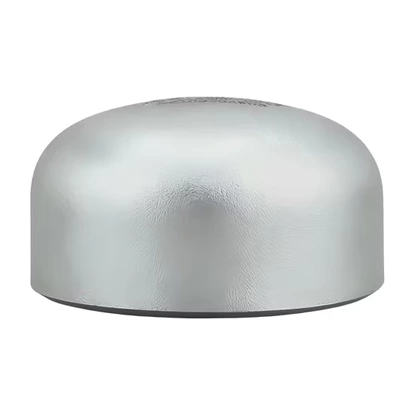How To Update Old End Caps?
In industrial equipment and piping systems, end caps are crucial components, responsible for sealing, pressure bearing, and protection. With prolonged use, old end caps may age, become damaged, or fail to meet new technical requirements. Therefore, replacing old end caps is an important step in improving equipment performance and extending service life.
This article will explore how to effectively replace old end caps to ensure the normal operation of equipment and provide practical solutions.
The Necessity of End Cap Replacement
End caps are key components in pipes, containers, pressure vessels, and other equipment, typically used to seal the ends of pipes or the top of containers. Over time, end caps may be damaged due to pressure, temperature fluctuations, and corrosion from chemical media. Especially in industrial production, stainless steel weld caps failure can lead to equipment leaks, reduced energy efficiency, or even equipment damage. Therefore, timely replacement of end caps not only improves equipment safety but also ensures system operating efficiency.
How to Diagnose End Cap Damage
Before deciding whether to replace end caps, a comprehensive inspection and assessment are necessary. Common causes of weld on pipe caps steel damage include material fatigue, corrosion, cracks, and welding quality issues. Regular inspection is the first step in identifying these problems. The integrity of the butt weld pipe cap can be initially assessed through ultrasonic testing, X-ray inspection, or visual inspection. If obvious corrosion, cracks, or deformation are visible on the stainless buttweld caps surface, or if frequent pressure leaks occur during use, replacement should be considered.
Selecting Appropriate Materials for Replacement
Choosing the right material is crucial when replacing old end caps. The end cap material must possess good pressure resistance, temperature resistance, and corrosion resistance, and be compatible with the equipment's operating environment. Common stainless steel buttweld caps materials include carbon steel, stainless steel, and alloy steel. For different operating environments, the most suitable material needs to be selected based on factors such as temperature, pressure, and chemical media. For example, in high-temperature or highly corrosive environments, high-temperature alloys or corrosion-resistant stainless steel may be necessary. Selecting appropriate materials can effectively improve the service life and performance of the steel buttweld caps, avoiding the high costs associated with frequent end cap replacements.
Design Considerations for End Cap Replacement
The design of the end cap must not only meet the basic pressure requirements but also consider the ease of installation and maintenance, as well as the overall structural stability. When designing a replacement plan, the specifications and dimensions of the end cap need to be determined to ensure they match the interface dimensions of the equipment. A suitable structural form should be selected based on the actual conditions of the equipment. Common end cap structures include flat end caps, spherical end caps, and elliptical end caps, each suitable for different pressure ratings and equipment requirements. When updating the design, consider optimizing the welding method of the end caps, employing processes with higher welding quality and simpler operation to improve the strength and sealing performance of the welded connection.
End Cap Replacement Procedure
-
Shutdown and Preparation: Before replacing the end caps, the equipment must be stopped to ensure safety during operation. All related pipelines and equipment must be completely emptied to prevent leaks during the replacement process.
-
Removing the Old End Cap: The old end caps are removed from the equipment by cutting or removing them. Care should be taken during removal to avoid damaging other parts of the equipment. If there is corrosion or wear at the connection between the end cap and the equipment, special care should be taken to prevent secondary damage during removal.
-
Cleaning and Inspecting the Interface: After removing the old end caps, the end cap interfaces must be cleaned and inspected for wear, corrosion, or cracks. If problems are found, the interfaces may need to be repaired to ensure a tight, leak-free installation of the new end cap.
-
Installing the New End Cap: Install the new end cap onto the equipment interface according to the pre-designed plan. During installation, ensure the alignment accuracy between the end cap and the equipment interface to avoid poor sealing due to misalignment. After installation, conduct a pressure test to check the sealing performance and stability of the end cap.
Regular Inspection and Maintenance
Although the equipment performance is improved after the end cap replacement, regular inspection of the end cap's condition is still necessary. Especially during the initial operation of the equipment, pay close attention to any abnormal pressure fluctuations or temperature changes in the end cap. Regular inspection and maintenance can effectively identify potential problems and prevent further damage to the end cap.
Summary
Replacing old end caps is an important measure to ensure the safety of industrial equipment and extend its service life. Through reasonable material selection, precise design, and standardized operating procedures, the performance and reliability of the end caps can be maximized. During the replacement process, every step must be carefully considered to ensure that the installation of the end cap is compatible with the equipment and possesses good durability. With continuous technological development, new end cap materials and design solutions will continue to emerge, providing more options for equipment replacement and maintenance.
As a head manufacturer, we can provide specialized technical support and services to help customers upgrade their old heads and improve their performance and lifespan.
